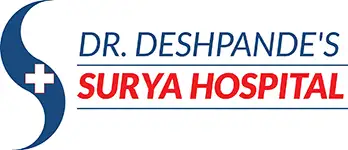
Pilonidal sinus refers to the infected cyst that develops under the skin around the buttock cleft. The cyst can be painful. It can get swollen and sometimes filled with pus, causing an infection. It’s important to see a doctor for a pilonidal sinus in Nerul as leaving the condition unaddressed for an extended period can increase discomfort and might even lead to complications. Here’s all you should know about pilonidal sinus, its causes, and treatment options.
Causes of Pilonidal Sinus
What exactly causes pilonidal sinus is unclear, but here’s a list of factors that may contribute to the heightened risk.
Genetic: Pilonidal sinus could be genetic. It might run in families, making people with a family history of this infection more prone to developing it than others.
Ingrown Hair: Hair that grows in the wrong direction might curve into the skin. When the hair gets stuck deep into the skin, it can cause inflammation and infection.
Friction: If your work involves prolonged hours of sitting, cycling, or other activities that create friction, you could develop pilonidal sinus. This happens when the hair gets pushed inside the skin from the pressure of sitting.
Poor Hygiene: Not cleaning the area around the buttocks or sweating excessively can increase your risk.
Signs and Symptoms
People with pilonidal sinus may not notice the symptoms initially or until a painful pus forms around the infected area. Here are the symptoms to watch out for:
- Pain near the buttocks, especially when sitting
- Noticeable lump in the area
- Pus or bloody discharge
- Abscess formation
- Itching
- Irritation and discomfort
If the infection persists for a prolonged period, you might develop fever.
Risk Factors
Here’s a list of people at an increased risk of developing pilonidal sinus:
- Men
- People between 15 and 40 years
- People with large amount of body hair, specifically around the buttock area
- Overweight adults
- People wearing tight clothes
- People sitting for prolonged periods
- Not maintaining good hygiene
It’s important to take preventive measures to mitigate your risk of developing pilonidal sinus. If you get the infection, here’s what to do.
Treatment for Pilonidal Sinus
Dr. Deshpandey specializes in the following procedures for pilonidal sinus.
EPSiT (Endoscopic Pilonidal Sinus Treatment):
This minimally invasive treatment approach for pilonidal sinus involves an endoscope inserted into the pilonidal sinus opening. The doctor visualizes the area, removes hair and debris from the infected tissue, and cleans the sinus cavity. No stitching is needed.
Cleft Lift:
For people with recurring episodes of pilonidal sinus, cleft lift surgery is the most practical option. The doctor cleans the sinus cavity and reshapes the buttock cleft.
Karydakis Flap:
This is another effective pilonidal disease treatment in Navi Mumbai for people with recurring infections. It involves removing debris from the sinus cavity and placing a healthy skin flap on the incision site.
Rhomboid Flap Surgery:
The surgery involves rotating the skin tissues from the surrounding area to the incision site and closing the wound with stitches.
Don’t wait and get pilonidal sinus treated immediately!
The condition is more common in young males, but anyone can develop it. If you suspect pilonidal sinus, it’s advisable to see a doctor for pilonidal sinus immediately, visit Dr. Anil Deshpande in Navi Mumbai at the earliest and discuss the most appropriate treatment options.


